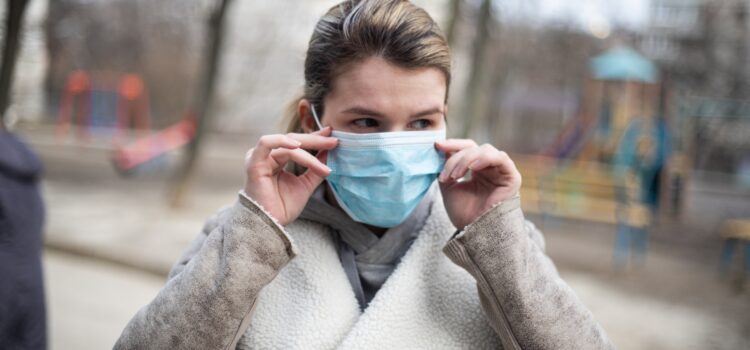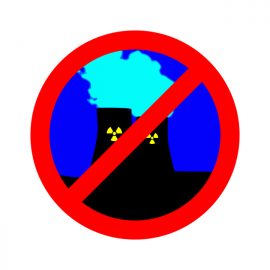

This article is an excerpt from the Shortform summary of "The Hot Zone" by Richard Preston. Shortform has the world's best summaries of books you should be reading.
Like this article? Sign up for a free trial here .
Was Ebola airborne? Were there outbreaks that showed that Ebola was airborne?
There were several outbreaks of Ebola that were shown not to be airborne. However, when the virus broke out in the US, scientists asked the question “was Ebola airborne?”
So, was Ebola airborne? Keep reading to find out.
Was Ebola Airborne?
Was Ebola airborne? Scientists didn’t think so, but were concerned about this possible method of transmission.
Ebola’s Airborne Potential
Was Ebola airborne? At first, scientists weren’t sure. Throughout Johnson’s experiments, none of the drugs worked. Every infected monkey died of the disease.
Eventually, even the two control monkeys who researchers hadn’t infected also caught the virus and died. They’d been kept in their cages, away from all the other monkeys, which should have kept them healthy because researchers believed the virus only traveled via direct contact with bodily fluids.
However, somehow the monkeys had been infected. Jaax believed that when the monkeys’ cages were cleaned, the moisture mixed with the sick monkeys’ spit and other fluids on the cages’ surfaces and created an aerosol of droplets. Jaax theorized that the aerosol allowed the virus to become airborne.
A Mystery Disease at the Reston Facility
The monkey colony manager, Bill Volt, considered the fact that the building’s air system was broken, and the heat was running high. The relentless heat could have put a strain on the monkeys and caused the deaths—but that didn’t explain why most of the deaths had been in just one room, Room F. Volt called Hazleton’s consulting veterinarian, Dan Dalgard, to take a look at the monkeys.
When Dalgard got the verdict from USAMRIID, he killed the rest of the monkeys in Room F, in order to stop the disease from spreading to monkeys in other rooms. Dalgard asked himself: Is Ebola airborne?
A few days later, Dalgard returned to the Reston facility to find that five monkeys had died in a room two doors down from Room F. This was alarming: Not only was the disease spreading, but it could skip rooms, suggesting it could be airborne.
Was Ebola Airborne? USAMRIID Says Yes
When USAMRIID researchers viewed samples of infected monkeys’ lungs, they saw that the virus had gotten into the lungs, taken over the cells, and multiplied until the cells were bursting with virus particles. The virus was present in the lungs’ air spaces, so when the infected monkey coughed, the virus shot out with the sputum. The same would be true in infected humans. Finding out the answer to the question “is Ebola airborne” was extremely important.
Although the virus was harmless to people at that point, researchers worried that it could easily mutate to become just as deadly to people as the other filoviruses—and its airborne transmission would make the effects far deadlier.
On one hand, the close contact required for transmission and the successful containment at Hazleton relieved some fear of a major epidemic or pandemic. On the other hand, all the questions that still remained about the filoviruses—including their hosts, where they originate, how and why they emerge, and is Ebola airborne—amplified the fear of future outbreaks.
(Shortform note: Since the book’s publication in 1995, there have been Ebola outbreaks every few years, the majority of which have been Ebola Zaire. Most have been fairly small (less than 100 cases) and centered in Western Africa, but one was a far outlier: From 2013-2016, Ebola Zaire spread across 10 countries, infecting more than 28,000 people and killing more than 11,000.)
So, was Ebola airborne? In the case of the Reston outbreak, the answer is yes.

———End of Preview———
Like what you just read? Read the rest of the world's best summary of Richard Preston's "The Hot Zone" at Shortform .
Here's what you'll find in our full The Hot Zone summary :
- The many different strains of Ebola, including the deadliest kind with a kill rate of 90%
- How scientists unraveled the mystery of a new strain of Ebola
- How Ebola could become airborne, becoming one of the deadliest viruses known







I worked at USAMRIID from 1972-1974 in a lab with Rhesis monkey’s, medical research, as i was in project whitecoat, working as a lab tech. which I was not trained in. My older brother told me to read “the hot zone”, saying, the things that you talk about is in that book which is the reason that I read it. This event occurred years after I had left. I worked in the older building, and we had about 10 monkeys in our building in their cages, we got them from the newer building (1430 If i remember correctly), and they had been there for a time before coming to us. My question was, at Reston, where did they get Ebola, or did it arrive with one of the monkey from Africa?